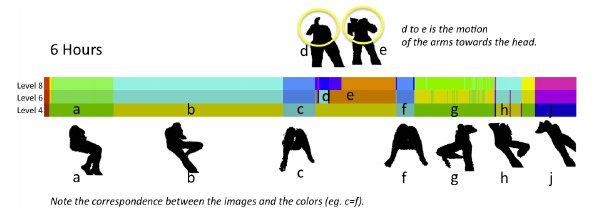Section: New Results
Automatic Activity Detection Modeling and Recognition: ADMR
Participants : Guido-Tomas Pusiol, François Brémond.
This year a new Ph.D. thesis has been defended [30] . The main objective of the thesis is to propose a complete framework for the automatic activity discovery, modeling and recognition using video information. The framework uses perceptual information (e.g. trajectories) as input and goes up to activities (semantics). The framework is divided into five main parts:
We break the video into chunks to characterize activities. We propose different techniques to extract perceptual features from the chunks. This way, we build packages of perceptual features capable of describing activity occurring in small periods of time.
We propose to learn the video contextual information. We build scene models by learning salient perceptual features. The models end up containing interesting scene regions capable of describing basic semantics (i.e. region where interactions occur).
We propose to reduce the gap between low-level vision information and semantic interpretation, by building an intermediate layer composed of Primitive Events. The proposed representation for primitive events aims at describing the meaningful motions over the scene. This is achieved by abstracting perceptual features using contextual information in an unsupervised manner.
We propose a pattern-based method to discover activities at multiple resolutions (i.e. activities and sub-activities). Also, we propose a generative method to model multi-resolution activities. The models are built as a flexible probabilistic framework easy to update.
We propose an activity recognition method that finds in a deterministic manner the occurrences of modelled activities in unseen datasets. Semantics are provided by the method under user interaction. All this research work has been evaluated using real datasets of people living in an apartment (home-care application) and elder patients in a hospital.
The work has also been evaluated for other types of applications such as sleeping monitoring. For example, Figure 34 display the results of the activity discovery method during 6 hours (left to right) applied to the center of mass (3D) of a tracked sleeping person. The colored segments represent hierarchical (bottom-up is finer-coarse) discovered activity which matches with sleeping postural movements. The segments have similar color when postural movements are similar. For example, the segment (j) is the only time the person sleeps upside down. Also, health professionals analysed the results claiming that the segments corresponds to normal sleeping cycle, where low motion is noticed at the beginning of the sleep and more motion is shown when the person have a lighter sleep when starts waking up.



